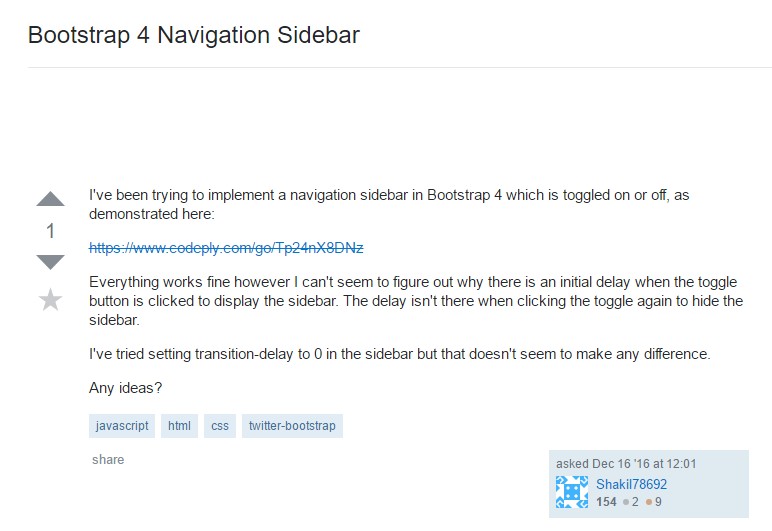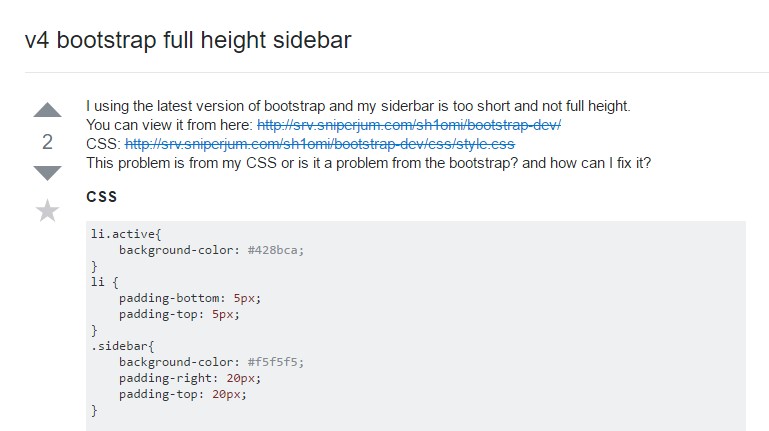Bootstrap Sidebar Example
Intro
Throughout the majority of the pages we recently notice the material stretches from edge to edge in size with a beneficial navigation bar just above and just easily becomes resized as soon as the specified viewport is hit and so practically the showcased material fluently utilizes the full width of the page provided. But at a particular instances the desired goal the webpages have to serve require together with the fluently resizing material area another component of the provided screen width to get assigned to a still vertical feature together with several urls and information inside it-- in other words-- the prominent from the past Bootstrap Sidebar element is required. ( helpful hints)
How you can utilize the Bootstrap Sidebar Submenu:
This is rather old-fashioned method but in the event that you truly want to-- you can certainly set up a sidebar component with the Bootstrap 4 system which in addition to its flexible grid system also provide a couple of classes designed specifically for developing a secondary level site navigation menus being certainly docked around the web page.
But let us begin it easy-- by just nesting some columns and rows -- It is pretended this could be the most convenient method. And also by nesting I indicate you can absolutely gave a
.rowAnd so let us say we desire a right adjusted Bootstrap Sidebar Submenu with several content in it and a principal webpage to the left of it. We need to prepare the grid tier down to what we want to maintain this alignment right before the sidebar and the major information stack around each other-- let us claim-- medium and up. Therefore a possible strategy achieving this might be this:
1st we need a container component to keep the columns and rows and since we are certainly developing something a bit more complex the
.container-fluidNext we need a
.row.col-md-9.col-md-3Next inside these particular columns we have the ability to just make some extra
.rowA number of more tips
Additionally in case you need to create a sidebar navigation menu along with the desired
.col-*.sidebar<main>.col-*Furthermore in case you have to create a sidebar navigation menu along with the wanted
.col-*.sidebar<main>.col-*Review a number of video training regarding Bootstrap sidebar
Related topics:
Incorporate off-canvas navigation sidebar ingredient

Stackoverflow: Bootstrap 4 Navigation Sidebar

V4 Bootstrap full height sidebar
